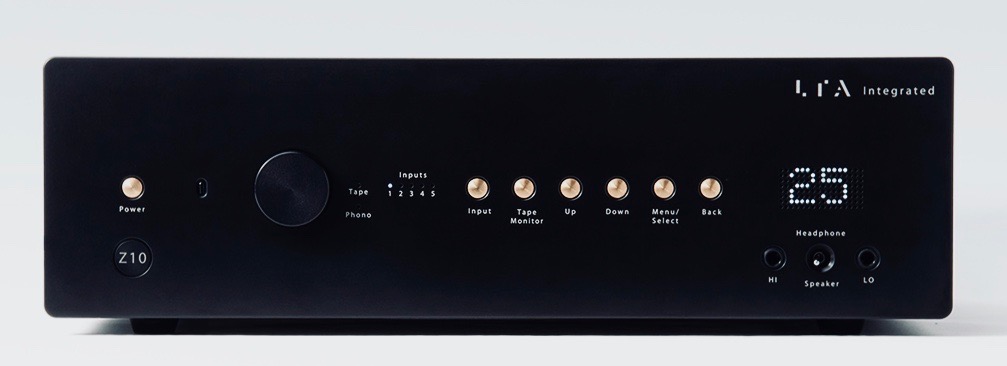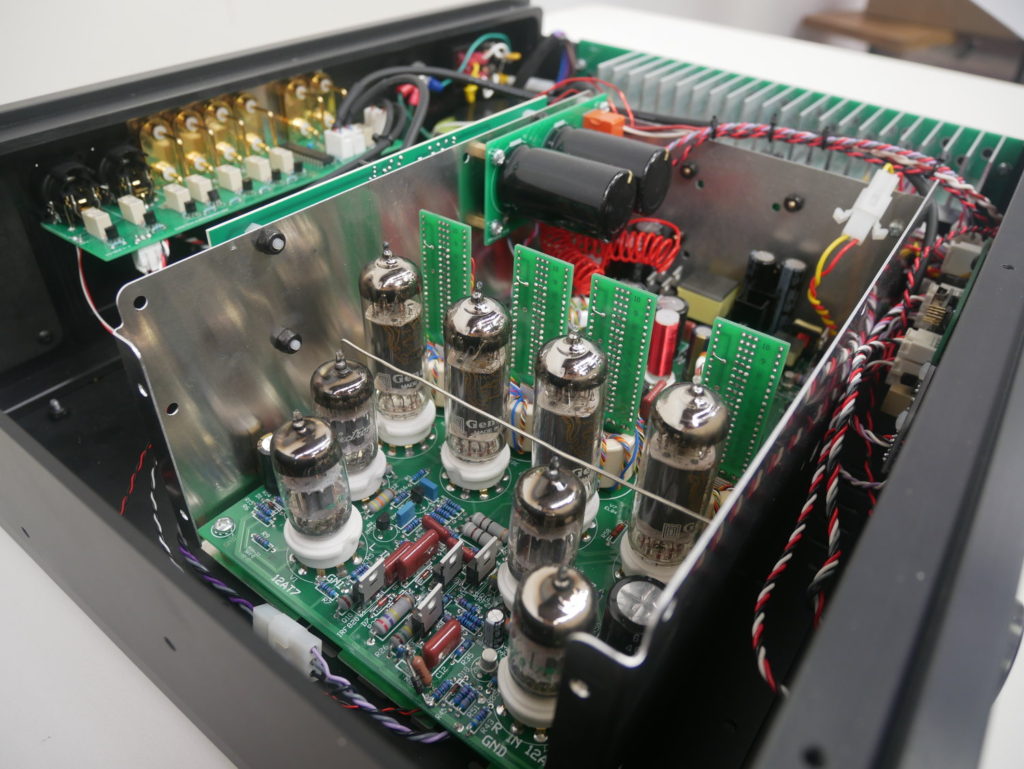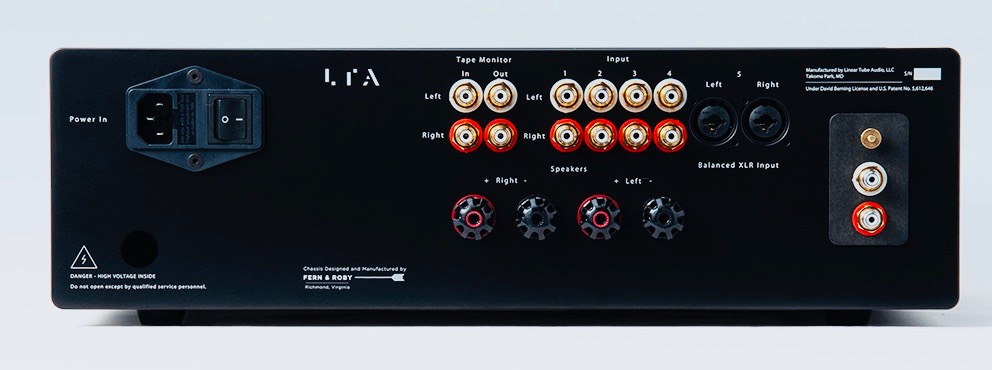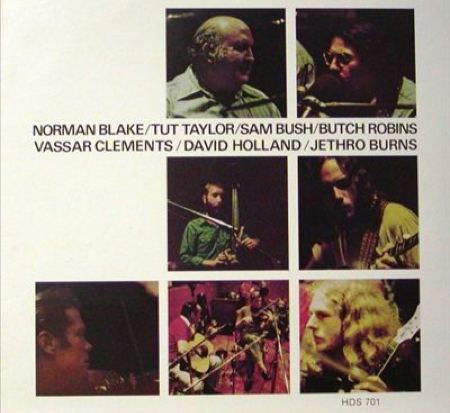
There has been very little time in the last two years that I haven’t had at least one piece of Linear Tube Audio gear in my system. So, I feel qualified to say that most people will find it hard to understand what these incredible electronics sound like until they hear them for themselves.
The Berning ZOTL Sound
The main reason for this is that a David Berning ZOTL amp does not sound like a tube amp, but it doesn’t sound like a transistor amp either. I know that LTA says their amps have “the tone of tubes with the clarity of solid-state.” I understand the statement, but the truth is their amps sound like neither.
Their sound is the quietest I have ever heard–not the quietest tube amps, but the quietest amps. This not only allows a listener to hear more detail, but it also enables the listener to hear some of the most captivating qualities of music. Their amps also produce a better sense of pace and rhythm than I have heard from any other tube or transistor amps. Out of this quietness comes explosive dynamics, and micro-dynamics that are so natural it’s hard to think about anything else but the music, the glorious music.

Description and Review System
With casework by Fern and Roby, the LTA Z10 is a very attractive and functional integrated amp. It has five analog-only inputs (four RCA, one XLR), tape input and output jacks, four binding posts for speaker out, two 6.3mm headphone jacks, and a linear power supply. The Z10 is a Class AB amplifier rated at 12 watts per channel into 8ohms and 13 watts into 4ohm load. power output is 12W into 8ohms and 13W into 4ohms.
I used it in my reference system with my DeVore gibbon Super Nine speakers with an impedance of 8-ohms and an efficiency of 91dB. I also used it with the Audio Note AN-E SPe speakers with an impedance of 8-ohms and an efficiency of 94dB. I originally requested this amp to use for the Audio Note speaker review because I thought it would be a good match. It was, but it was also a good match for the DeVore Super Nines.
So What’s Different?
I was really excited about the arrival of the Z10 integrated. I love the LTA MZ3, but at 1 watt, it just doesn’t have the power for any of the speakers I have in my house at this time. So, yes, the Z10 is more powerful than the MZ3, but this isn’t the only difference. The Z10, for example, is Class AB where the MZ3 is pure class A. So, I wasn’t expecting the Z10 to sound like a more powerful MZ3.
In fact, the Z10 has a lot more going on than you might realize at first glance including its own complete ZOTL circuitry. The volume control circuitry is identical in both amplifiers. It also has premium components, and a ceramic board, like the MZ3. Even though the build quality of the components used by the amplifier designer is to the same high standard, the design of the preamp is different.
The circuit was borrowed, however, from a much more expensive amplifier, David Berning had designed previously. The preamp in the Integrated is more like an extra gain stage on the front of the Z10. It doesn’t have to have its own complex ZOTL circuitry. It’s basically a simple balanced to a single-ended converter with some gain.

How Does It Sound?
The Z10 has a very realistic musical presentation. It plays music with wonderful harmonics and richness but with musically quick transience and exceptional bass control. Mentioning the bass, the Z10 was able to carry the music with a really good rhythmic drive. The bass was also very well defined, very tight, and there wasn’t the least hint of a “one-note bass.” There was also a very natural air around and within most of the bass instruments.
The Z10 also has great transients, especially in the leading edge. Many tube amps dull the leading edge thus producing that liquid, lush sound associated with tube amps. There are very few amps that I have heard that can produce a realistic leading edge and realistic harmonics and timbre. The Z10 played string and woodwind overtones beautifully. I was also impressed with the air and with the bite of horn instruments.
The soundstage and imaging were very well portrayed and very natural with the Z10. By this I mean the soundstage was wide enough, deep enough, tall enough and had enough air to never sound two dimensional. It was a very coherent three-dimensional soundstage with good scale.

The Z10 does its magic in the midrange, which is where the Z10 breathes life into the recording. I could hear small differences in voices and breathing, and the instruments had a rich harmonic structure. On piano solos, it was much easier to hear the differences from one piano to the other.
I’m still not saying enough about the midrange or the midbass. They are magical and cannot be easily described. Another word of warning though, the Z10 is neither dark nor bright. It is simply amazingly beautiful to listen to, and while it’s not a hybrid amp, it does seem to combine the advantages of tubes with the clarity of solid-state.
Let’s Spin Some Tunes

This recording, Harrow & The Harvest by Gillian Welch and David Rawlings, was done at Woodland Sound Studios in Nashville. With the Z10 in my system, the LP sounds as if they are playing in a small hall and I’m sitting in row E or F. The result is a musical experience that is truly magical and memorable. I think this is as much as we can expect when listening to studio recordings that are being reproduced by a stereo system.
I said basically the same thing about listening to this album with the PureAudio One integrated amp. This statement is true and accurate about both amps, but the recording does not sound at all the same with the two amps. The Z10 is faster and more transparent, which made the finger work on the string instruments more detailed. Also, the beat of the music seemed better. The PureAudio One, on the other hand, enabled me to hear more of the decay of the instruments and more of the air around the instruments. If I was listening with the Audio Note Es, I preferred the Z10, and with the DeVore speakers, I preferred the PureAudio One amp. Of course, the PureAudio One amp costs twice as much.

I recently discovered this album, Leonard Cohen Live in Dublin, on Qobuz, and it has become my favorite Cohen album. I prefer the female back up singers and, as silly as it sounds, the audience, more than the ones on his London live album. Again on this album, the Z10 carries the pace and beat slightly better, but the PureAudio One lets me hear more of the venue and the audience. The One also had slightly better tonality in the bass, but remember that amp costs twice as much.

I’ve been listening to this LP for around 40 years, and it is simply incredible. The music on this LP celebrates the joy of plucking, and I’ve never heard it sound better than with the Z10 as the amp in my system. The strings were quick and the music had an incredible pace.
Concluding Thoughts
All of my comparisons in this review were to products that are at least twice the price of the LTA Z10. I don’t know of an integrated amp that’s better than the Z10 for under $10,000. This amp plays music with soul and naturalness.


Thanks for your well informed review. Did you get a chance to listen to the headphone amp? Did your integrated come with the phono option? If it did how dod it sound?
Can you comment on the difference you heard, if any, between the ZOTL 10 Mk. II and the Z10?
I didn’t have them at the same time.
Hi Jack,
Are you going to review the Ultralinear integrated that just came out?
Herve
I have requested it, but it’s selling awfully fast at the moment, which usually means no spare units for reviewers.
Thanks Becky!
Sir, This request has nothing to do with the LTA Z10. I was wondering if you could do a review of the Aurum-cantus M102se loudspeakers,if you can find a pair. I do own a pair and IMO they are simply outstanding for anywhere near the$3299.00us price. I think you’ll be totally impressed also. Thanks,Mike G.